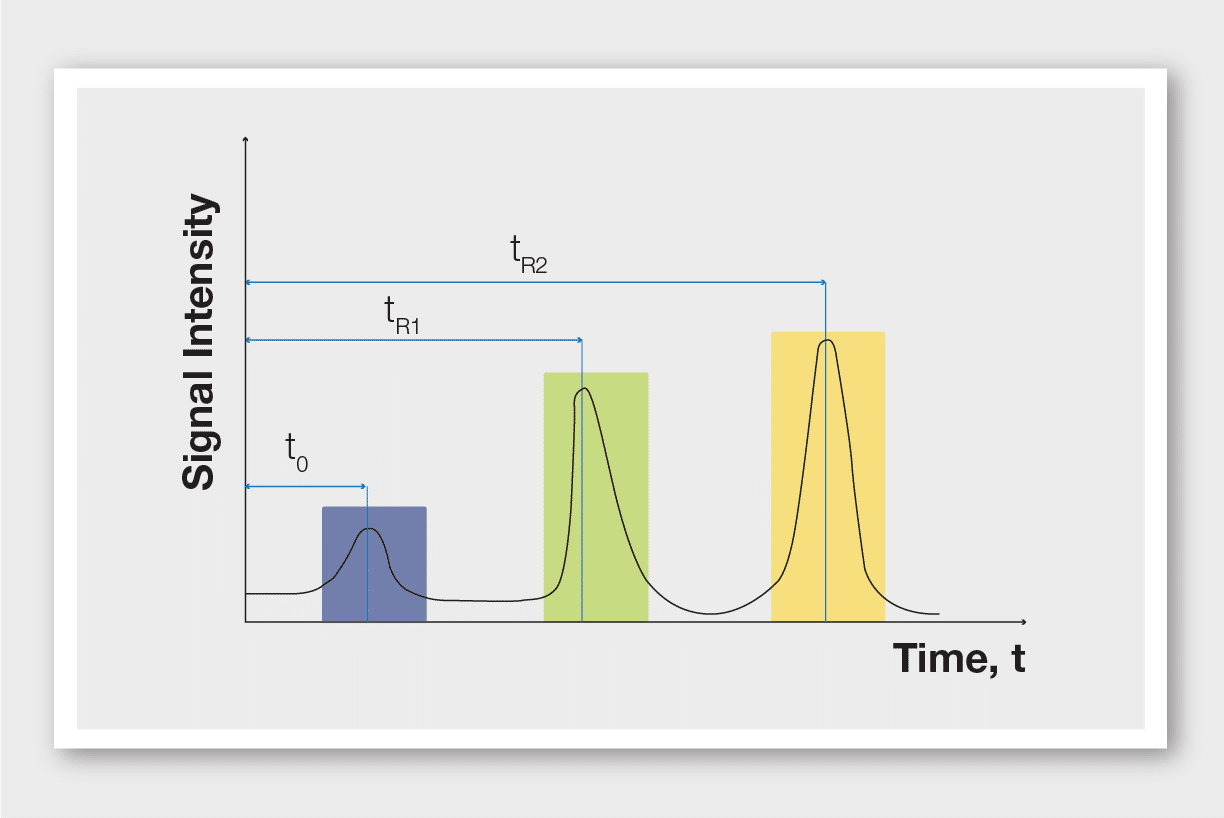How to choose a stationary phase, optimize selectivity and get better resolution in chromatography
The most important factor that influences resolution during a chromatographic separation is selectivity. This post offers a detailed description of selectivity and how this parameter influences chromatographic separations. Helpful hints on how optimize selectivity by finding the most appropriate stationary phase are also included.
With summer officially over, I would like to reflect on one of my personal achievements of the season. I managed to conquer a pretty high mountain summit this year and it came with a great feeling of accomplishment. I must say that the views were breathtaking and from my point of view, it seemed as if I was swimming in a sea of mountain ridges, valleys and hills. In fact, I often couldn’t tell if I was looking at a single wide mountain peak or several summits that were just too close together to make out clearly.
The chemist that I am, I couldn’t shake off my love for chromatography even at 2,500 m above sea level. My mind started to drift from the mountain peaks before my eyes to another kind of peaks that I encounter more often, those in chromatograms.
Just like the mountain tops right in front of me, distinguishing between two chromatographic peaks is largely dependent on the distance between them. But let me reel back a little bit.
As discussed in a previous blog post, in a chromatographic separation, the resolution of one analyte from another is determined by three main factors: efficiency, selectivity and retention. The factor with the highest impact on resolution is undoubtedly selectivity.
Selectivity is a measure of the ability of the chromatographic system to distinguish between sample components. This factor can be visualized as the distance between two chromatographic peaks.
The selectivity factor α is defined as the ratio of retention factors for two chromatographic peaks:

Where tR1 is the retention time of compound one
tR2 is the retention time of compound two
t0 is the dead time which refers to the elution time of an unretained compound or the time needed for the solvent to travel through the cartridge.
The selectivity factor α is 1 in cases where the two retention factors tR1 and tR2 are identical and the two compounds are co-eluting. A mixture where α is 1 cannot be separated. The larger the selectivity factor, the further apart the two peaks become, and a better separation results.

The following example illustrates how selectivity factors influence separation quality.

Can we do anything to influence selectivity?
Selectivity is relatively easy to alter, with mobile phase composition and stationary phase being the primary means of adjustment.
The hydrophobicity, polarity and nature of the chosen stationary phase all play a crucial role in analyte interaction and directly affect the selectivity of a separation. When choosing the stationary phase, you should keep in mind a basic rule:
LIKE for LIKE
In other words, you should choose a stationary phase with similar polarity characteristics to those of the sample components. For example, higher polarity of the stationary phase will increase the selectivity of the cartridge for the polar components in the sample.
But when solvent modifications don’t help on a seemingly adequate phase, the only solution is mostly go for another stationary phase.
There is a big variety of stationary phases available on the cartridge/column market. These are the stationary phases mainly used in flash and prep chromatography:
- Silica has a high polar surface, it is the most popular stationary phase, ideal for conventional applications
- C18 has a non-polar surface, ideal for peptides and proteins
- Amino has a medium polar surface, ideal for carbohydrates and nitrogen containing heterocycles and amines
- Diol has a low polar surface, ideal for lipids
- Alumina has a high polar surface, ideal for acid sensitive compounds
Another important factor that can influence selectivity is the mobile phase. I go into more details on how to choose the most appropriate mobile phase and improve the resolution of your separations in the next post. I don’t like leaving you with this cliffhanger, so I promise I won’t keep you waiting long.
Till next time,


WANT TO STAY IN TOUCH?
Click on the button and receive the latest posts directly in your messenger!
Related Posts
10th December 2018
How to optimize your mobile phase to improve selectivity and resolution in chromatography
Discover methods for choosing the most suitable solvent to achieve better selectivity and resolution in your separations→
22nd June 2018
World Cup Fever: How to Score Purer Compounds by Improving Resolution in Chromatography
Soccer fans or not, all chemists want to give impurities a red card. Read today how to improve resolution and score purer compounds →
7th February 2019
Three chromatography problems the new Pure system solves
There are challenges in chromatography when it comes to user, sample and environmental safety. See how the Pure chromatography system sets out to solve them →
8th May 2019
Putting safety first during the chromatography process
Bart discusses how to maximize the safety of user, sample and the surroundings during the chromatography process →







So fantastic thank i really appreciate your works
Thank you Sarah!
Stumbled onto your teachings, love how you illustrate and convey information, very conservational. helps to fill blanks in my understanding of diff aspects of HPLC
Hello Matt!
Thank you so much for your kind words!
Best,
Bart
Dear Bart,
your way of explaining is awesome…simple and clear concepts I have ever seen…
Dear Madhusudan,
Thank you very much for the compliment! You’ve made my day! Hope you keep coming back to the blog for more.
Regards,
Bart
Its 2022 but your blog is one of the best to expaliain chrom.